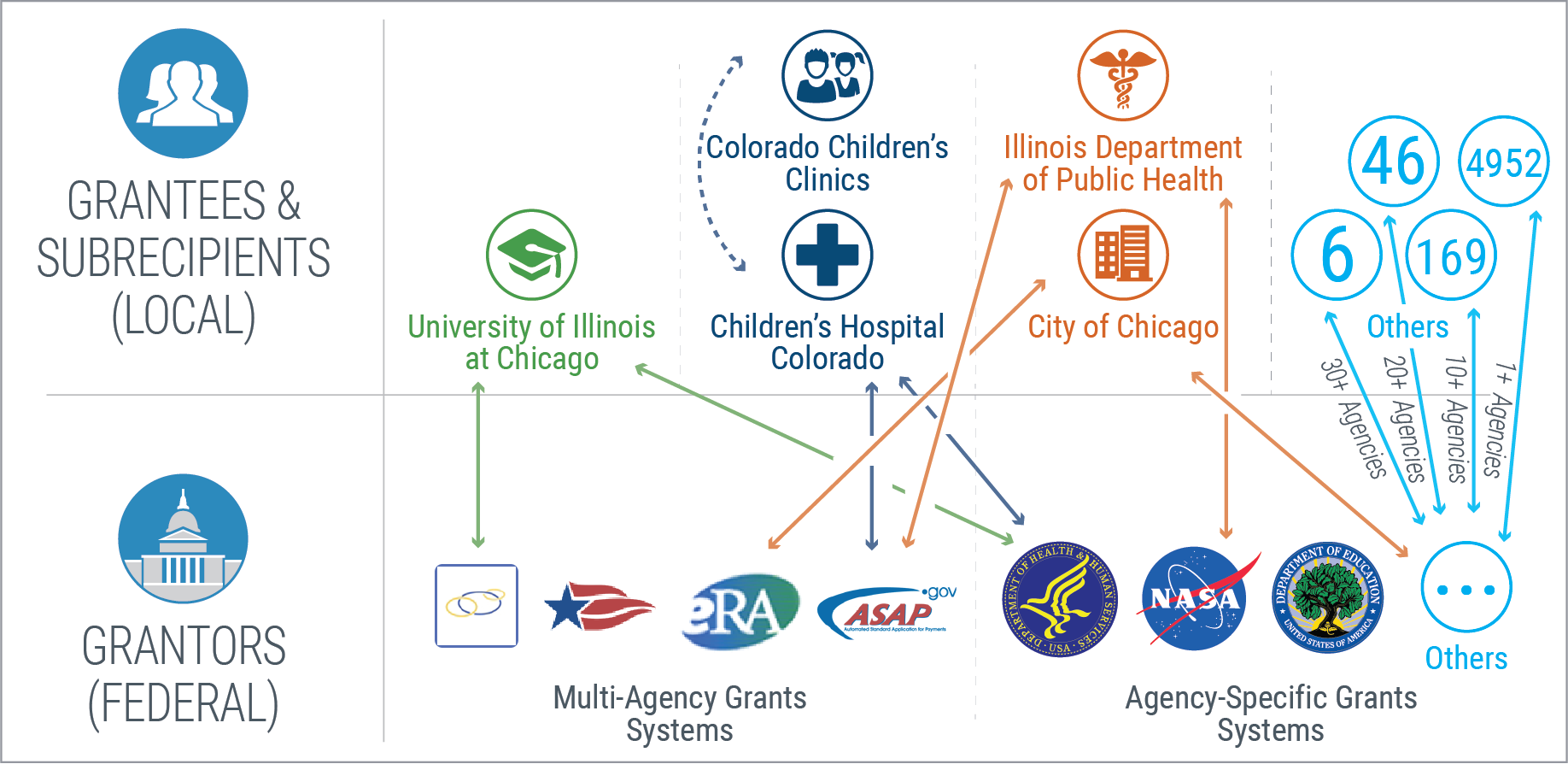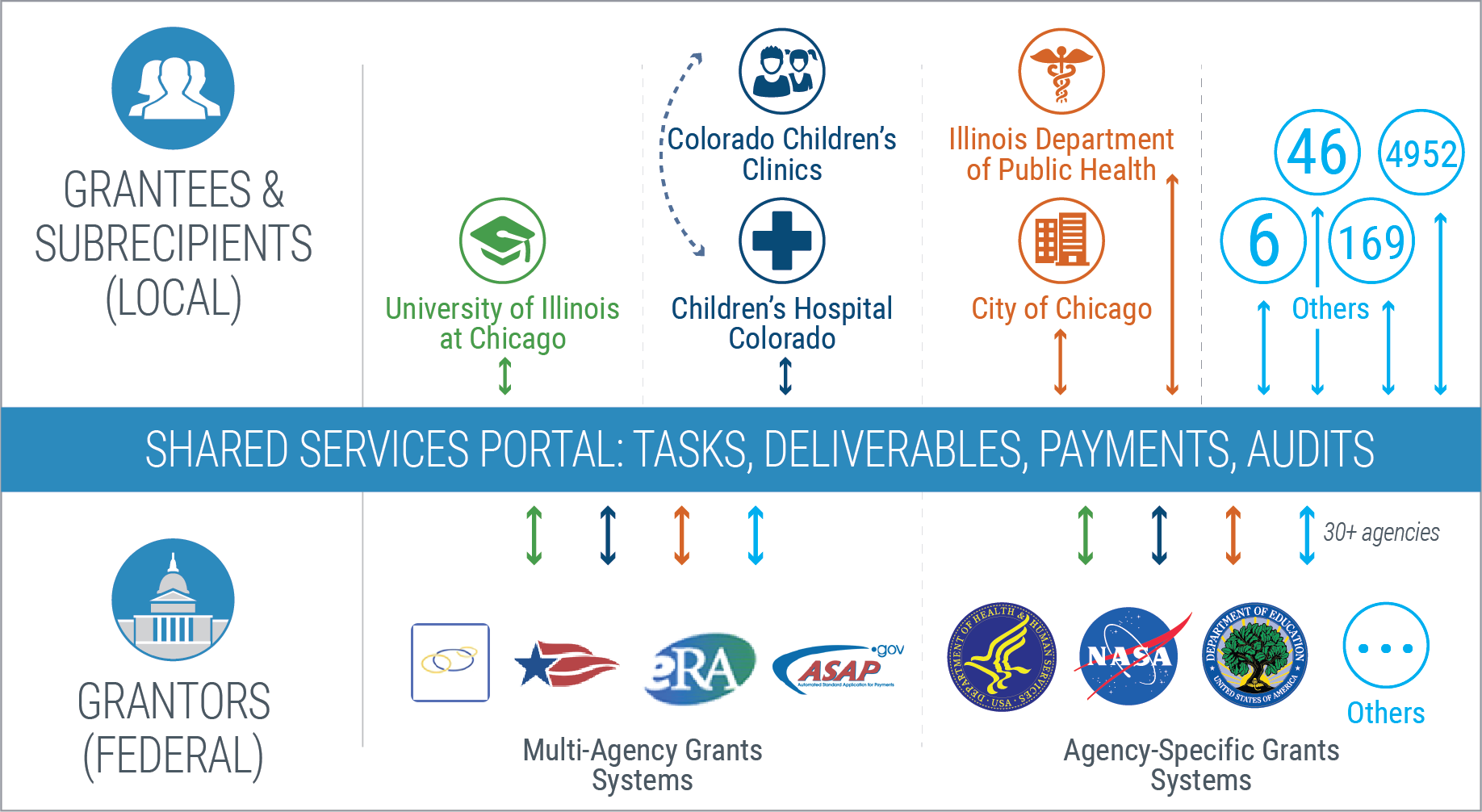A Unified Reporting Portal Would Help Government and Grant Recipients

kentoh/Shutterstock.com
A portal could make grantees’ lives easier, but also offer the federal government a better way to evaluate risks.
The federal government provides over $650 billion each year in grants to fund programs and to stimulate the economy but the application and compliances processes have placed an unnecessary burden on grant recipients (grantees).
Each year hundreds of thousands of users from grantee organizations work collaboratively to apply for, receive an award, and meet the post-award requirements. Grants.gov has successfully consolidated and centralized initial applicant interactions with the government. However, once the applications are received by the federal agencies, grantees must deal with a variety of systems during the award and post-award phases of a grant’s life cycle.
Many grantees receive funds from several federal agencies and provide similar information via a different system to each different grantor agency. For example, states and universities sometimes must work with 20 to 30 different federal agencies. Even with the adoption of shared services in grants management, such grantees often must deal with more than a dozen systems across the government. They must remember separate usernames and passwords, navigate different user interfaces, and struggle to manage what needs to be done and deadlines for their post-award and compliance commitments. The result is that frustrated recipients spend more of their resources on low-value activities and less achieving the purpose of the grants.

Current Post-Award Confusion: Recipients with grants from multiple agencies must deal with a myriad of systems
A solution to this problem would be to provide a common portal for post-award grantee interactions across the government. This would reduce duplication, strengthen security, and channel grantee oversight toward high-value activities such as technical assistance instead of merely assuring compliance. Overall, improving grantee experience will ultimately lead to better mission outcomes because grantees will be more engaged and more satisfied.
Learning from the Private Sector
To improve post-award grantee experience, proven solutions from the private sector, such as banking, restaurant or education could be adopted. For example, Mint.com allows consumers to track their bills, bank accounts and credit cards in one place. The restaurant industry has similar action-based aggregators, such as OpenTable.com, that allows anyone to reserve a table at many different participating restaurants. In the education industry, portals such as Coursera.org provide centralized access to open online courses provided by universities from across the world. In each case, the portal solution aggregates transactions and upcoming tasks from different providers in a single, customer-centric view. This saves the user time and trouble in conducting business. Participating providers expose their data and services using simple APIs without having to change their own systems in any dramatic way.
Adapting for the Public Sector
For the grants domain, a portal solution could provide similar capabilities, acting as a façade across every grants system in the federal government.

The Solution - A Post-Award Portal: Reduces grantor and grantee confusion and burden.
Each agency system would be required to expose connectors for common services such as reporting requirements and machine-readable notice-of-award documents. The portal would allow grantees to configure their account to pull data for each grant in their portfolio regardless of which agency made the award. Thus, grantees will have a single view of common functions such as tasks, deliverables, audits and payment transactions. The common data can be easily grouped by dimensions such as date to make it user-friendly for grantees to track their commitments and prioritize work across their entire portfolio. The actual work still occurs in respective grant-making systems used by agencies, as the portal intelligently routes each user to the destination system.
Besides the benefits for grantees, the portal can be used by the federal government to analyze grantee risk across grant programs, to identify process efficiencies, to create benchmarks, and to develop best practices across grant-making agencies that drive down costs to issue, administer and monitor a federal grant.
What’s Next
A cross-government initiative like this requires a commitment to action. We recommend:
- The Office of Management and Budget should designate a sponsoring agency to take the lead in developing a grantee portal.
- The sponsoring agency, e.g., the General Services Administration or the Health and Human Services Department, could leverage the Modernizing Government Technology Act to funding development of a grantee portal, based on expected savings.
- The government should apply design thinking to reinvent the grantee experience on post-award interactions. A deeper understanding of the grantee needs can be developed by making smarter use of grantee satisfaction surveys and/or creating government-wide feedback channels on platforms such as UserVoice or ForeSee.
For further detail on the concept of a portal solution, please read a more detailed REI white paper here.
Pawin Chawanasunthornpot is a solution architect for REI Systems and Subhash Kari is a vice president for REI Systems.


